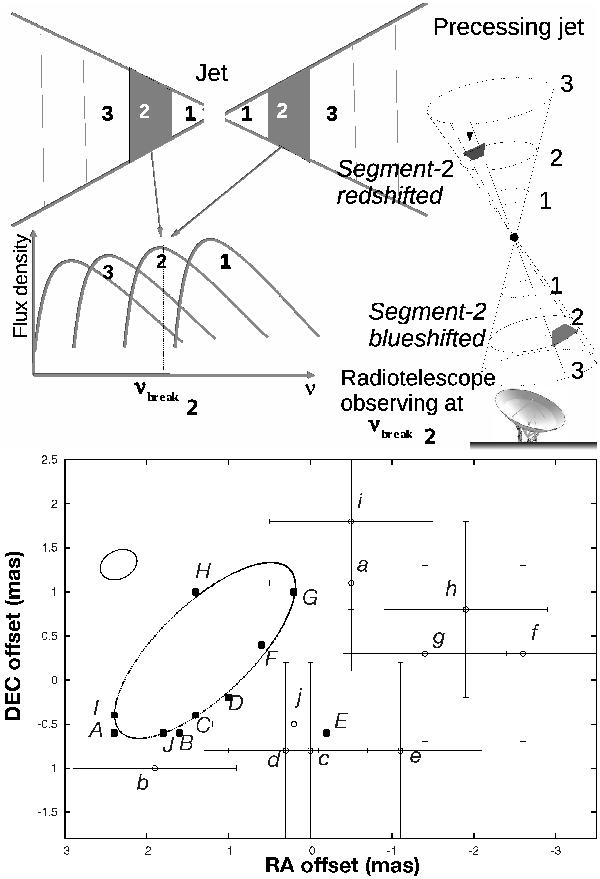Fig. 3

Top-left: superposition of individual spectra, each with a different νbreak, associated with different segments of a steady jet. Top-right: for a precessing microblazar, the core component, dominated by the approaching jet contribution because of Doppler boosting, will describe an ellipse during precession. Bottom: astrometry of consecutive peaks of VLBA 8.4 GHz maps (capital letters) and 2.3 GHz maps (small letters) for runs A–J with the orbit drawn to scale at an arbitrary distance. East is to the left. Peak of 8.4 GHz map E, even if displaced from the other ones, which is therefore likely affected by the approaching component of the transient jet, is at a position angle that is consistent with the other peaks. The small error of 0.04 mas for the astrometry at 8.4 GHz is indicated by the filled squares. That the precessing compact object moves in an orbit with semimajor axis of ~0.2 mas introduces additional variations. Errorbars of 1 mas for the astrometry at 2.3 GHz represent only a lower limit to the error associated with large Galactic scattering and low resolution (see Sect. 2.2).
Current usage metrics show cumulative count of Article Views (full-text article views including HTML views, PDF and ePub downloads, according to the available data) and Abstracts Views on Vision4Press platform.
Data correspond to usage on the plateform after 2015. The current usage metrics is available 48-96 hours after online publication and is updated daily on week days.
Initial download of the metrics may take a while.




